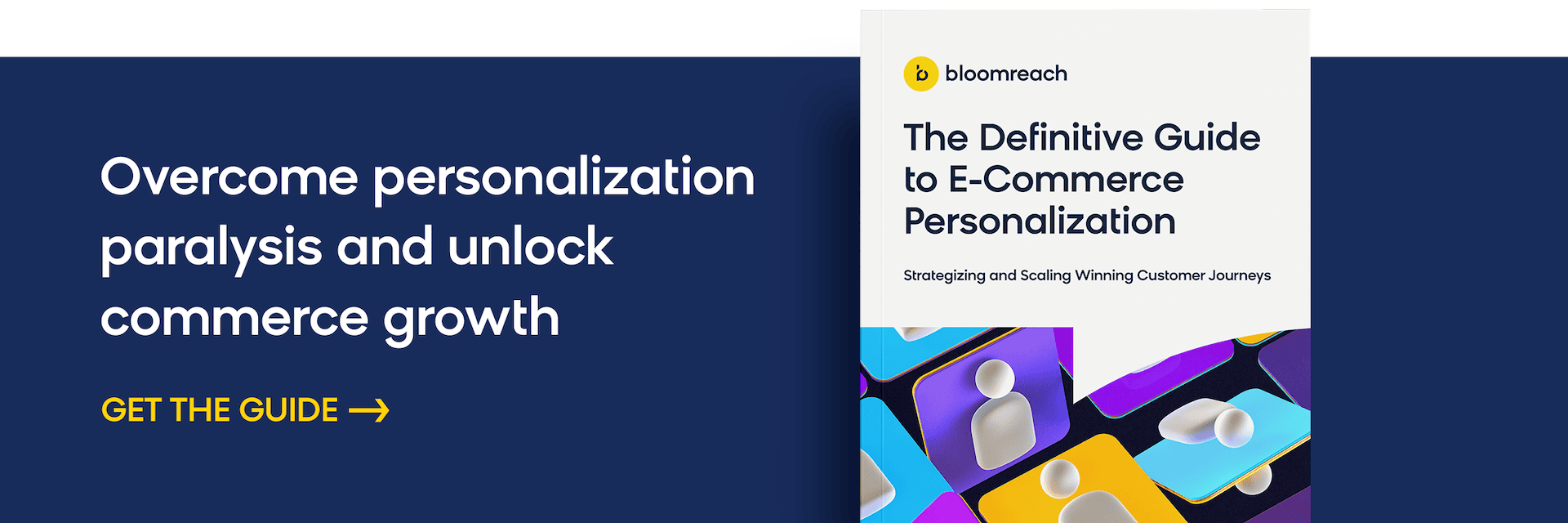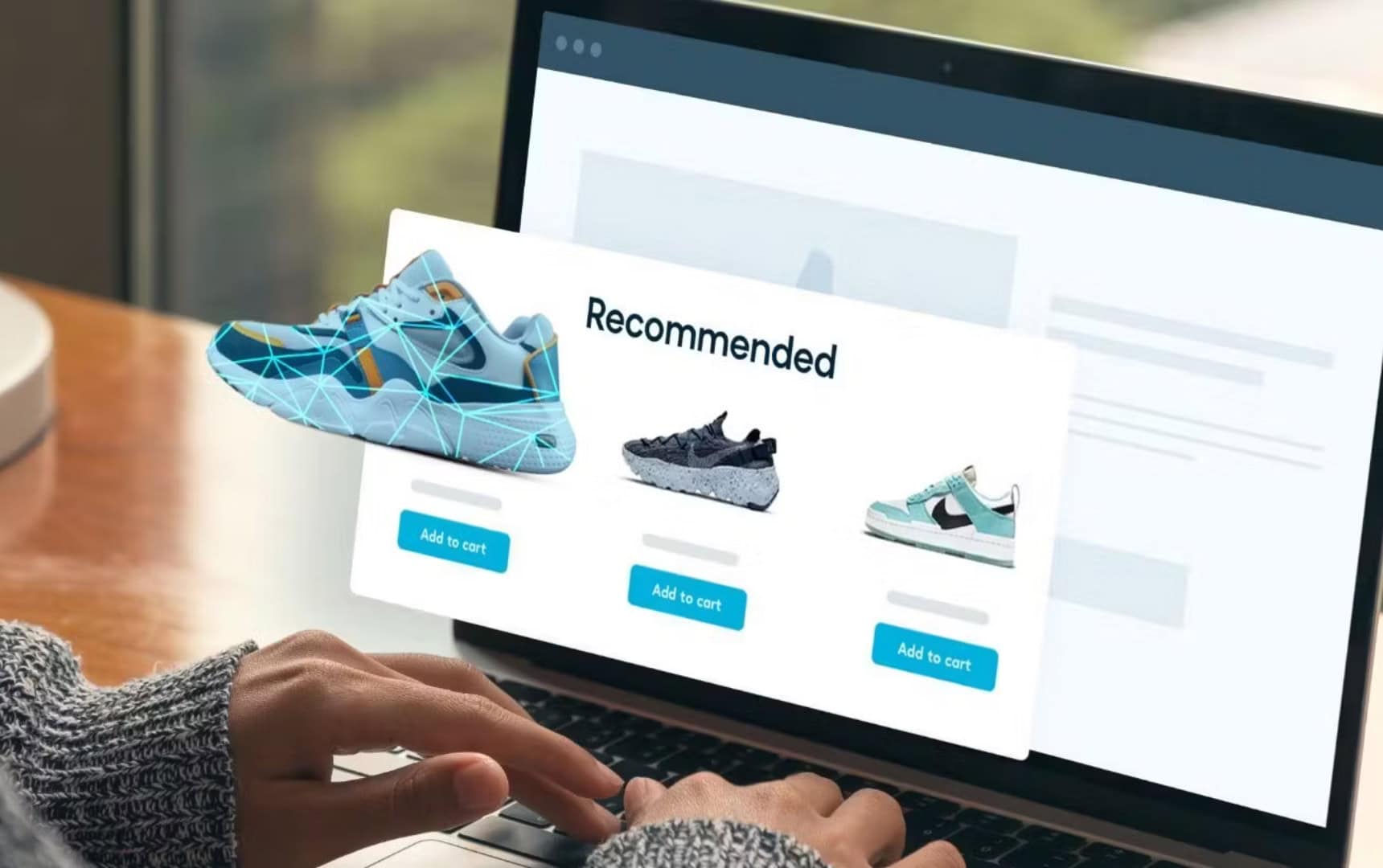“Omnichannel.”
You’ve probably heard and read this buzzword many times — in your sales meetings, on your favorite marketing blog. Occasionally, you might even drop the word yourself.
But when the word is everywhere, it can get confusing what people actually mean by it. In this blog post, we’ll answer the question “what is omnichannel?” once and for all, and also explain the difference between omnichannel, multichannel, and single-channel commerce.
Find out what an omnichannel customer experience and omnichannel digital marketing can do for your business today — and in the future.
What Is Omnichannel Commerce?
Omnichannel commerce is a multi-faceted approach to sales that is focused on providing seamless customer experiences across multiple channels. The goal is to create a consistent experience at every touchpoint whether the customer is shopping online from a mobile device, on a laptop, or in a brick-and-mortar store.
According to Harvard Business Review, 73% of all customers use multiple channels during their purchase journey.
The State of Commerce Experience shows that almost half (44%) of B2C buyers and 58% of B2B buyers say they always or often research a product online before going to a physical store. Even when in-store, they will still go online to continue their research.
These ecommerce trends show that only when customers have gathered as much information as possible from a variety of sources to support their purchase decision will they decide to buy from a retailer.
So, a good omnichannel strategy is to focus on the entire customer experience — not the customer’s individual experiences on different channels.
What Is The Difference Between Omnichannel and Multichannel?
There are differences between omnichannel and multichannel commerce. Let’s break the terms down individually:
- Single-channel commerce means you’re selling your product via one sales channel only. This could be your brick-and-mortar store, your webshop, or an online marketplace like eBay. This alone can work perfectly well. But if you want to give your customers a richer experience with your brand, it’s wise to look into additional channels where you can sell your product.
- Multichannel commerce means you’re selling your product to your customers on different channels, both online and offline. You interact with your customer via social media, by phone, and in your physical store. Your online presence is on point and your customers know where to find you. Multichannel is already a great strategy to get people engaging with your brand.
- Omnichannel commerce also takes place on multiple channels, like the multichannel commerce strategy, which is where it can feel confusing. Just keep in mind that without multichannel, there’s no omnichannel. The big difference is that omnichannel commerce connects all channels. This means your customer has a seamless experience across every platform.
Now, let’s see what omnichannel commerce can do for your business.
Benefits of Omnichannel Commerce
Omnichannel commerce is a powerhouse strategy, seamlessly integrating multiple platforms to enhance the customer experience.
By providing a cohesive journey across online and offline channels, businesses can unlock increased sales opportunities and foster stronger customer loyalty. This dynamic approach ensures a consistent brand presence, allowing companies to stay competitive and responsive to ever-evolving consumer demands.
Keep reading to learn the top eight benefits of a high-performing omnichannel commerce strategy.
Omnichannel Commerce Benefit #1: Better Customer Experience
What do your customers expect? Number one on the list is a unified experience.
According to UC Today, 9 out of 10 consumers want an omnichannel retail experience with seamless service between communication methods. As the number of touchpoints increases, so does the need for a seamless integration from one touchpoint to another, whether it’s a social ad, an email newsletter, a mobile push notification, a conversion with your chatbot, or a face-to-face chat with your store staff.
By breaking down the walls between the channels in a business, the consumer is empowered to interact with a company in a way that feels natural to them.
Omnichannel Commerce Benefit #2: Increase in Sales and Traffic
While making your sales strategy omnichannel-ready isn’t that simple, it’ll definitely be worth your time and money.
A study of 46,000 shoppers showed that omnichannel customers spend more money than single-channel customers.
And with every additional channel they used, the omnichannel shoppers spent more money in the store.
Customers who used four or more channels spent an average 9% more in the store compared to those who used just a single channel.
Omnichannel Commerce Benefit #3: Boosted Customer Loyalty
Not only do omnichannel customers spend more, they’re also more loyal to your brand. The same study shows that within six months after an omnichannel shopping experience, these customers had logged 23% more repeat shopping trips to the retailer’s stores.
They were also more likely to recommend the brand to family and friends than those who used a single channel.
With an engaging brand story, you can stop pushing discount coupons, mid-sale campaigns, and other traditional marketing tricks. Focus on customer loyalty and your brand will be safe.
This means that an omnichannel strategy will not only increase sales, but it will also improve your customer loyalty. Sounds good, right?
Omnichannel Commerce Benefit #4: Better Data Collection
Retailers who are able to track their customers over different channels can better serve their consumers with a more personalized experience.
The omnichannel approach allows businesses to gain insights on how to create content and offers that will encourage their customers to shop more — not only online, but also at the physical stores.
Omnichannel Commerce Benefit #5: Higher Sales and Revenue
Omnichannel commerce significantly boosts sales and revenue by seamlessly integrating multiple sales channels, allowing businesses to reach a broader customer base.
This comprehensive approach enhances conversion rates as customers enjoy a consistent and satisfying shopping experience across platforms. By catering to diverse consumer preferences, businesses not only improve customer satisfaction but also drive higher profitability.
Omnichannel Commerce Benefit #6: Improved Inventory Management
Improved inventory management in omnichannel commerce ensures that businesses have better stock visibility across all sales channels, leading to more accurate demand forecasting.
By integrating inventory systems, companies can minimize overstock and prevent stockouts, optimizing their supply chain operations for greater efficiency. This strategic approach not only enhances operational agility but also supports a more seamless customer experience, ultimately boosting profitability.
Omnichannel Commerce Benefit #7: Streamlined Operations
Along a similar path, omnichannel commerce strategies will allow your business to streamline operations and operate more efficiently. Streamlined operations enable businesses to integrate sales and communication channels, resulting in more efficient processes.
This integration reduces operational costs by improving coordination and eliminating redundancies across departments. As a result, companies can focus on strategic growth, enhancing their ability to adapt quickly to market changes.
Omnichannel Commerce Benefit #8: Increased Reach and Market Penetration
Increased reach and market penetration through omnichannel commerce empower businesses to expand their audience and explore untapped markets, boosting brand visibility across diverse platforms.
By leveraging multiple sales and communication channels, companies can effectively engage with a wider demographic, enhancing their market presence. This comprehensive strategy not only opens doors to new opportunities but also strengthens competitive advantage, driving sustained growth.
Personalization in Omnichannel Commerce
Your customers expect a personalized experience at every channel and touchpoint. That means offering omnichannel personalization to your customers.
Today’s consumers don’t just want quality products — they want them fast and to be able to get information about them quickly. They want to go to your website and be able to search products easily, compare prices, and see personal recommendations.
Among this overload of information, personalized content is crucial in attracting consumers’ interest. While all other information hits them in the face and still gets ignored, personalized content talks directly to them.
It’s become even more critical to offer personalized omnichannel experiences to your shoppers since 74% of online consumers get frustrated with websites when content appears that has nothing to do with their interests, and frustrated shoppers don’t buy.
This means that personalization is no longer a nice-to-have, but a must for today’s businesses.
And this is where properly managing your data becomes key. You’ll want to power your technology with a customer data engine that can take all your data, then visualize and activate it for omnichannel orchestration and personalization.
In this way, you can learn what your customers desire and personalize content for them at scale. As a result, your customers find what they need much faster, are more satisfied with their shopping experience, and businesses see a higher conversion rate.
How Do You Create an Awesome Omnichannel Strategy?
Changing your single-channel strategy from web-only or store-only to a multichannel or even omnichannel experience takes a lot of time, effort, and resources.
But it will be worth it.
Creating an Omnichannel Strategy
Here are five high level steps that will help you get started with an omnichannel strategy that works for your brand:
Get to know your customer: Don’t make assumptions. Research your target audience’s interests, behavior, and needs. Ask them questions, invite customer feedback, and leverage social media and social listening tools.
Map the customer journey: Plan out where your customers should be going and what they should be engaging with from your brand prior to them beginning on their journey.
Select the right channels: Find out where your customers are and what they’re doing.
Choose a clear purpose per channel: One channel mainly for interaction, the other for news updates and so on.
Connect all channels: This is the hard part and only works if you execute it perfectly (omnichannel only). You’ll need the right technology to follow your customer across all touchpoints: from reading reviews on your website, seeing social ads, or window shopping at an online marketplace to finally purchasing at your physical store.
Maintain your channels: There’s no time for leaning back — keep on testing and improving your strategy. Document these touchpoints well to serve your customers best. This way, you’ll create a loyal customer who keeps coming back for more.
Track performance and optimize: Some areas you will excel, and others you won’t. Tracking your performance will allow you to know where your omnichannel commerce strategy is meeting or exceeding expectations and where it is falling short. Where it is falling short, don’t be afraid to optimize.
What’s Next in Omnichannel Commerce?
Web-only brands are now investing in physical stores.
Take Amazon, which opened their first brick-and-mortar store in Seattle in 2015 and is expanding rapidly ever since with over 460 stores in the US, Canada, and the UK. It’s clear that the Amazon HQ understands that the future of shopping is connected.
And of course, mobile apps are getting more and more important too. Customers don’t go anywhere without their mobile phone.
Powerful app features enrich the omnichannel shopping experience by connecting online and offline touchpoints. For example, having a mobile barcode scanner for looking up product details and ordering out-of-stock products online while being in-store.
Lastly, the importance of customer service as part of the omnichannel experience continues to rise.
IBM shows that AI-powered, automated customer service is the future. This doesn’t mean that human service agents aren’t needed anymore.
According to IBM, artificial intelligence (AI) and automation will give human agents context to understand who they’re talking to. Also, chatbots and social media will continue to play a big role in being in contact with your customers at any time.
In digital retail especially, tapping into a cohesive ecommerce ecosystem will be an important way of staying connected with customers. To do that, you’ll need the power of a Commerce Experience Cloud that combines product discovery, customer data and marketing automation, and headless content management to achieve true personalization.
Customers now expect to reach their go-to brands whenever and wherever. Being reachable for your customers at the channels of their preference is crucial for a complete omnichannel experience — even after purchase.
Embracing AI: The Key to Mastering Omnichannel Commerce
In today’s dynamic ecommerce landscape, creating a seamless omnichannel experience is no longer a luxury—it’s a necessity. But as we all know, necessity is the mother of invention. Enter Artificial Intelligence (AI), your new secret weapon in mastering omnichannel strategy.
AI is the game-changer that’s confidently steering the ecommerce industry into uncharted territories of customer engagement and personalized experiences. By harnessing AI’s vast capabilities, businesses can smartly connect the dots between different channels, creating a cohesive and engaging customer journey.
One of the primary ways AI enhances omnichannel is through data analysis. It’s like having a friendly, highly efficient analyst on your team, sifting through mountains of data to provide actionable insights. With AI, you can track customer behavior across multiple marketing channels, understand their preferences, and anticipate their needs. This knowledge allows you to tailor your messaging and offers to each customer, making your brand not just another online store, but a relatable companion in their shopping journey.
But AI’s contribution to omnichannel doesn’t stop at data analysis. It’s also revolutionizing customer service with the recent advancements made with conversational commerce. AI-powered virtual assistants can now accurately provide instant, around-the-clock support, answering queries, resolving issues, and even recommending products based on past purchases. They’re the epitome of smart customer service — quick, efficient, and always available.
AI is also helping businesses optimize inventory management — an essential aspect of maintaining a consistent brand experience across channels. AI algorithms can predict demand trends, helping you plan ahead and ensure that your customers find what they need when they need it, whether they’re shopping online or in-store.
AI is a powerful tool that can transform your business strategy and increase customer satisfaction. AI can help you connect online and offline channels, add additional customer service representatives to your team without hiring new employees, and help you optimize your omnichannel marketing strategy.
As we continue to navigate the rapidly evolving ecommerce landscape, it’s clear that the brands that will thrive are those that embrace AI’s potential to create a friendly, smart, and seamless shopping experience. So, don’t just adapt to the omnichannel trend—lead it with AI.
What is Omnichannel Digital Marketing?
Businesses are constantly searching for effective ways to engage with their customers across multiple channels. This is where omnichannel digital marketing comes into play.
Omnichannel digital marketing, also known as omnichannel digitalization or omnichannel digital transformation, involves creating a seamless and integrated customer experience across various online platforms. It goes beyond simply having a presence on different channels; it focuses on providing a cohesive and personalized journey for customers throughout their entire digital interaction with a brand.
One of the key objectives of omnichannel digital marketing is to deliver a digital omnichannel experience that ensures customers receive consistent messaging, offers, and support regardless of which channel they choose to engage with. Whether it’s through websites, social media, mobile apps, email campaigns, or even physical stores, the goal is to provide a seamless transition between channels, allowing customers to pick up where they left off, no matter where they are in their purchasing journey.
By embracing omnichannel digital marketing, brands can effectively build stronger relationships with their customers, enhance brand loyalty, and ultimately drive business growth. Here are some key benefits of adopting an omnichannel approach:
- Consistency: By maintaining a consistent brand voice, visual identity, and messaging across all channels, businesses can create a unified and memorable experience for customers.
- Personalization: With access to customer data and insights from various touchpoints, businesses can tailor their marketing efforts to deliver personalized content, recommendations, and offers that resonate with individual customers.
- Convenience: Omnichannel digital marketing provides customers with the convenience of choosing their preferred channel for engagement, making it easier for them to interact with the brand on their own terms.
- Optimization: By leveraging data analytics and tracking customer behavior across channels, businesses can optimize their marketing strategies to improve conversion rates, customer satisfaction, and overall ROI.
An Example of Successful Omnichannel Experiences
Yves Rocher
Business challenge:
Yves Rocher is a worldwide cosmetics and beauty brand, and aims to offer high-quality, custom solutions for every skin type while being mindful of sustainability.
To that end, Yves Rocher wanted to provide better personalized product recommendations to both returning customer and first-time visitors in order to give each customer a truly custom experience.
Solution:
To realize its mission of personalization, Yves Rocher turned to Bloomreach Engagement for its real-time and personalized product recommendations. While a lack of customer data history often means companies can’t do much for first-time visitors, Bloomreach Engagement’s algorithms were able to create personalized recommendations for first-time visitors as soon as they interacted with a product on the site (and within a fraction of a second!).
Thanks to this real-time personalization, Yves Rocher saw an 11x better conversion rate than a more generic “top-selling products” recommendation.
Benefit Cosmetics
Business challenge:
Benefit Cosmetics is the No.1 Prestige Makeup Brand in the UK and No.1 Brow Brand Worldwide and is synonymous with fun, instant beauty solutions. Boasting some of the most loved and iconic beauty staples such as Hoola Bronzer, BADGal Bang Mascara, Precisely My Brow Pencil, Gimme Brow+, and Porefessional Primer dominating makeup bags up and down the country.
Benefit tapped into the partnership between Bloomreach and Mailgun by Sinch and wanted to create an omnichannel campaign that met customers where they were in the customer journey with their brand.
Solution:
Benefit Cosmetics used Bloomreach Engagement to successfully deploy its incredible “Blush Launch” omnichannel campaign, which combined email, lead generation, and weblayers. Email marketing played a critical role in moving customers forward in their journey with Benefit after acquisition through other channels.
The campaign was split into three sections: pre-launch, launch, and post-launch. Each section had different objectives (driving launch awareness, recruiting new customers, supporting sell-through) and communications were sent using Bloomreach Engagement to help accomplish these goals.
In the end, the Blush Launch campaign had a 50% higher click-through rate compared to other Benefit campaigns in the same year.
Read more: Benefit Cosmetics Launches to Success With Bloomreach Engagement
Are You Ready to Provide a Better Omnichannel Customer Experience?
Keeping up with the ever changing world of commerce isn’t easy.
Today, more and more brands are exploring the benefits of omnichannel to optimize both online channels and offline channels and improve customer service. Making your own shift from single-channel or multichannel to an omnichannel strategy will ultimately be worth your time and effort.
A quick recap of the differences between single-channel, multichannel, and omnichannel commerce:
- Single-channel commerce sells through one sales channel, for example as a store-only or web-only business
- Multichannel commerce operates on multiple channels, both online and offline
- Omnichannel commerce connects the dots between all channels, offering customers a seamless experience across all platforms
Is your business ready to be introduced to omnichannel commerce? Learn how to create an omnichannel customer engagement strategy and why your business needs to invest in one ASAP.

















